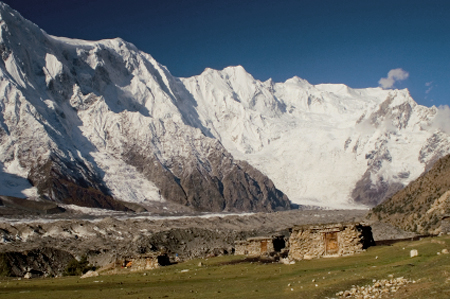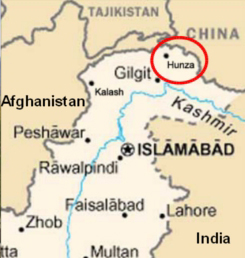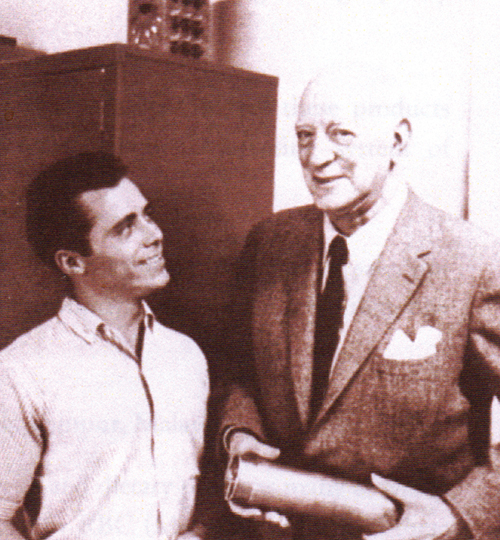Hunza Water ~ the Secret of Longevity
|
The Hunza Valley is one of the most miraculous places on earth. It is an area of northern Pakistan where the people live long, age gracefully, and flourish in happiness. Find out what they're doing right, what you can learn, and how to sneak a bite of what they're eating and drinking.
In the 1970s, when the Karakoman Highway was built through the Hunza Valley tracing the old silk routes from Pakistan to China, National Geographic featured the civilization residing there as one of the longest living in the world. Until this time, the light-eyed, fair-skinned Hunzakuts were quite isolated in the pristine Pakistani mountain tops and claimed to be lost descendants of Alexander's army as he invaded India. What interested researchers when they arrived was how fit, healthy, and happy their elderly population was. Since the civilization had no hospitals, doctors, police, or history records, the researchers could not determine exactly how old they were by a birth certificate. |
 |
|
The Hunzakuts are estimated to live, on average, to about 115 years old. This was astonishing considering average life span was so much older than some of our civilizations oldest - with healthy bodies and minds to boot!
Almost everything the Hunzakuts feast on is readily available at most North American supermarkets. Then, what is the difference? They eat it fresh, unprocessed, and in season. They eat fresh and dried fruits abundantly - year round. On top of their diets, Hunzakuts exercise daily, walking and working amongst their mountainous landscape. Researchers call their diet lacto-vegetarian. They eat these vegetables raw when they can, including young green corn, leafy greens, carrots, and turnips. They also sprout pulse/grain when possible. If they do cook vegetables, they put them in a pot with very little water - similar to our steaming process. So, their diet consist in consuming raw, unpasteurized milk, leafy green or root vegetables. But the most important part of their diet consists in drinking glacier water. |
 |
What's in the water?
|
Dr. Henri Coanda the Romanian father of fluid dynamics and a Nobel Prize winner at 78 yrs old, spent six decades studying the Hunza water trying to determine what it was in this water that caused such beneficial effects for the body. He discovered that it had a different viscosity and surface tension. Dr. Patrick Flanagan and others continued the research. They found Hunza water had a high alkaline pH and an extraordinary amount of active hydrogen (hydrogen with an extra electron), with a negative Redox Potential and a high colloidal mineral content. Similar natural water properties and longevity are found in other remote unpolluted places such as the Shin‐Chan areas of China, the Caucasus in Azerbaijan, and in the Andes Mountains.
In efforts to recreate the Hunza water, Japanese scientists investigated Russian electrolysis technology. They found that electricity could be used to restructure the water, giving it properties similar to Hunza water. This functional water technology was first developed in Japan in the early 1950's and the experiments were first conducted on plants and animals. Full scale development started in 1954 by several agricultural universities on the effects of ionic water, especially acid water, on plants; experiments by Japanese doctors followed, using alkaline ionized water on their patients. The first ionizers were large units used in hospitals. |
 |
Following efforts by Japanese medical doctors, the water ionizer was approved for medical therapeutics by the Japanese Ministry of Health and Rehabilitation in January 1966. Later they were also approved as medical devices by the government of South Korea.
Some 30 million people in Japan have used a water ionizer over the last 40 years.
Water Ionizers have come to North America in the 3rd millennium.
GET YOUR OWN HUNZA GLACIER IN YOUR KITCHEN BY ORDERING ANTYENT WATER IONIZER HERE
|
